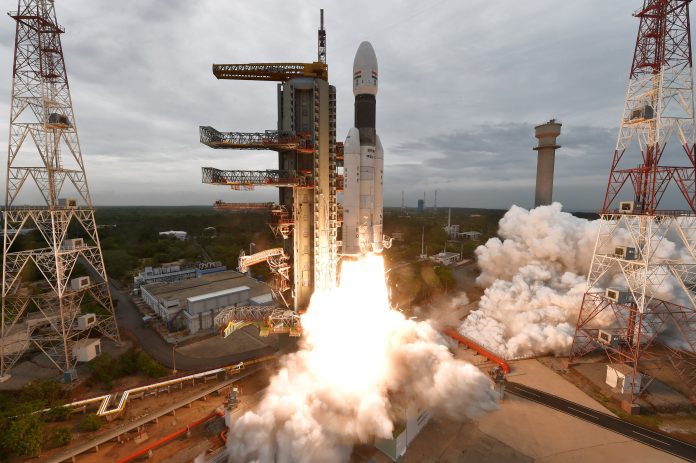ISRO’s vision is to “tackle space innovation for the national turn of events” while pursuing space science research and planetary investigation. The accomplishments are wonderful considering the parsimonious financial plan of the Indian Space Research Organization, which has become well known for minimal effort, exceptional yield space missions.
ISRO is the space office under the Department of Space of Government of India, headquartered in the city of Bengaluru, Karnataka. Its vision is to saddle space innovation for the national turn of events while pursuing space science research and planetary investigation. Antrix Corporation Limited (ACL) is a Marketing arm of ISRO for advancement and business abuse of room items, specialized consultancy administrations and move of advances created by ISRO
Genisis
The space research exercises were initiated in India under Dr. Vikram Sarabhai, the founding father of the Indian space program, during the 1960s.
Since its inception, the Indian space program had three distinct components, for example, satellites for correspondence and remote sensing, the space transportation framework, and application programs.
The INCOSPAR (Indian National Committee for Space Research) was initiated under the authority of Dr. Sarabhai and Dr. Ramanathan.
During 1975-76, Satellite Instructional Television Experiment (SITE) was led. It was hailed as ‘the biggest sociological test on the planet’. It was trailed by the ‘Kheda Communications Project (KCP)’, which functioned as a field research center for need-based and region explicit program transmission in the province of Gujarat State.
During this period, the main Indian shuttle ‘Aryabhata’ was created and was propelled using a Soviet Launcher. Another significant milestone was the advancement of the primary dispatch vehicle SLV-3 with an ability to put 40 kg in Low Earth Orbit (LEO), which had its first fruitful trip in 1980.
In the test stage during the ’80s, Bhaskara-I and II missions were pioneering steps in the remote sensing territory while ‘Ariane Passenger Payload Experiment (APPLE)’ turned into the forerunner for future correspondence satellite framework
During the operational stage in the ’90s, significant space infrastructure was made under two expansive classes: one for the correspondence, broadcasting, and meteorology through a multi-reason Indian National Satellite framework (INSAT), and the other for Indian Remote Sensing Satellite (IRS) framework. The turn of events and operationalization of Polar Satellite Launch Vehicle (PSLV) and improvement of Geosynchronous Satellite Launch Vehicle (GSLV) were critical accomplishments during this stage.
Ongoing Achievements of ISRO
Mangalyaan, 2014
- India joined a selective worldwide club when it effectively propelled the Mars Orbiter Mission
- The budget that was, at any rate, multiple times lower than a comparative venture by the US
- The Rs 450-crore venture spun around the Red Planet and to gather information on Mars’ environment and mineral piece.
IRNSS, 2016
a) The seven-satellite framework made India’s one of a kind satellite route framework.
b) Provide administrations in marine route, a calamity the executives, vehicle tracking and armada the board, and route assistant for drivers.
c) The Indian-possessed framework will be especially valuable amid war to gain positional exactness.
Launched 20 satellites, 2016
a) The Isro propelled 20 satellites in a single strategic, record for the space office
b) Apart from Isro’s satellites and those worked by college understudies in the nation, the crucial satellites from the US, Canada, Germany, and Indonesia
c) The PSLV conveyed a load of 1,288 kilograms, with India’s Cartosat-2 arrangement satellite (725.5 kg) taking up most it.
d) The Cartosat satellite targets charting urban, provincial, beach-front land use, and water dissemination among others.
Reusable Launch Vehicle, 2016
a) Fully re-usable vehicle, seen as the eventual fate of ease, solid and on-request space get to
b) The innovation will bring down the general payload conveyance cost radically by practically 80%.
Scramjet Engine
a) Conventional launchers which convey fluid oxygen or an oxidizer to fire the engine
b) Scramjet engine inhales air from the air and uses its oxygen to consume the fuel
c) Scramjet engine prompts quicker and less expensive rockets contrasted with the conventional fluid or cryogenic engines.
GSLV MK III/LVM 3
a) GSLV Mark 3 or LVM 3, is a satellite launcher that will make India confident in launching satellites, fit for placing 4-ton class geosynchronous satellites into space
b) Powered by an indigenously evolved Cryogenic engine, the launcher will be utilized to dispatch different satellites in the geostationary circle
c) It will likewise be utilized to dispatch the principal Indian team vehicle later on.
Effective ways for reducing the cost of access to space
Bringing down fundamentally the expense of access to space is an essential objective of room programs far and wide today.
Improve the payload portion by adopting more current advancements and improving the general productivity of the framework
Including increasing the push of the vehicle by progressively productive fluid fuel engines, for example, semi cryogenic and cryogenic engines
Recuperate the equipment and reuse for numerous dispatches
Decrease the initial fuel loading by adopting more up to date burning modes, for example, air-breathing ramjet/scramjet driving forces
A coordinated effort among different countries, with the goal that the expense of R&D is diminished
Innovative work by open part can be expanded with domain specialization and capital of private division companies like Space X.
Future missions
GSAT9
a) GSAT 9 is a multi-band perception and correspondence satellite scheduled for dispatch before the finish of this current year
b) The 2.3-ton satellite will convey two payloads, a 12 Ku band transponder, and the GAGAN framework that will plan to give GPS administrations
c) A joint undertaking being created via the Airport Authority of India and the ISRO, the framework will help pilots flying over the Indian airspace to explore within an exactness of 3 m.
d) The framework will likewise help in the investigation of the Ionosphere over the Indian locale.
NISAR
a) A joint venture by NASA and ISRO, the NASA-ISRO Synthetic Aperture Radar (NISAR) framework plans to co-create and dispatch a first of its kind radar imaging satellite.
b) The mission plans to gauge the world’s surface including normal perils like seismic tremors, volcanoes, and tidal waves
c) Insights on the evolution and province of Earth’s covering and information about the ongoing environmental change emergency.
Chandrayan-2
a) Slated for a dispatch constantly 2018 using the recently grown overwhelming lift launcher GSLV Mark III. b) The second lunar investigation strategic going to include a lunar orbiter alongside a lander and meanderer. c) The main point of the mission is to create propelled lander and meanderer advances and set the reason for future tasks, for example, the Mangalyaan-2 which will see India landing a Rover/lander on Mars.
Mangalyaan 2
a) Mangalyaan 2 is the replacement crucial expects to land a meanderer and lander on Mars nearby another orbiter.
b) The Mangalyaan 2 will be worked as a joint endeavor among India and France.
c) The Mangalyaan 2 will be finished continuously in 2020 and will utilize GSLV III.
ISRO’s innovations can help in financial improvement of India
Mapping of national parkways through satellite imaging will help NHAI to lay roadways in a better manner.
Exact planning with the assistance of remote sensing satellites, which can help in the accomplishment of a Smart city venture.
It can likewise help in the mapping of mineral assets.
Weather forecasting: Project like RISAT which is exclusively working to create an exact weather forecast, can support ranchers and beachfront individuals if there should be an occurrence of violent winds, and so forth.
Correspondence satellite offer types of assistance like wellbeing, education to remote regions
ISRO can adequately evacuate asymmetries is the information stream by providing precise information in case of violent winds, floods, waves, and so forth.
Bhuvan and Gagan can help in reducing the asset drain of the administration from spending on the US claimed GPS.
Conclusion
Presently the opportunity has arrived for a progressively organized methodology that empowers better incubation for youthful ability in India. Fortunately, Antrix is available to such thoughts. Different approaches and acts need to change from being prohibitive to being enabling. India now not anymore an innovation searcher yet provider!!










Whoa this blog is excellent I love reading your posts. Keep up the great work! You understand, lots of persons are hunting around for this information, you can aid them greatly.
Thank you
I’m still learning from you, as I’m making my way to the top as well. I certainly love reading all that is posted on your blog. Keep the articles coming. I loved it!
Thank you
Having read this I thought it was very informative. I appreciate you taking the time and effort to put this article together. I once again find myself spending way to much time both reading and commenting. But so what, it was still worth it!
Thank you so much